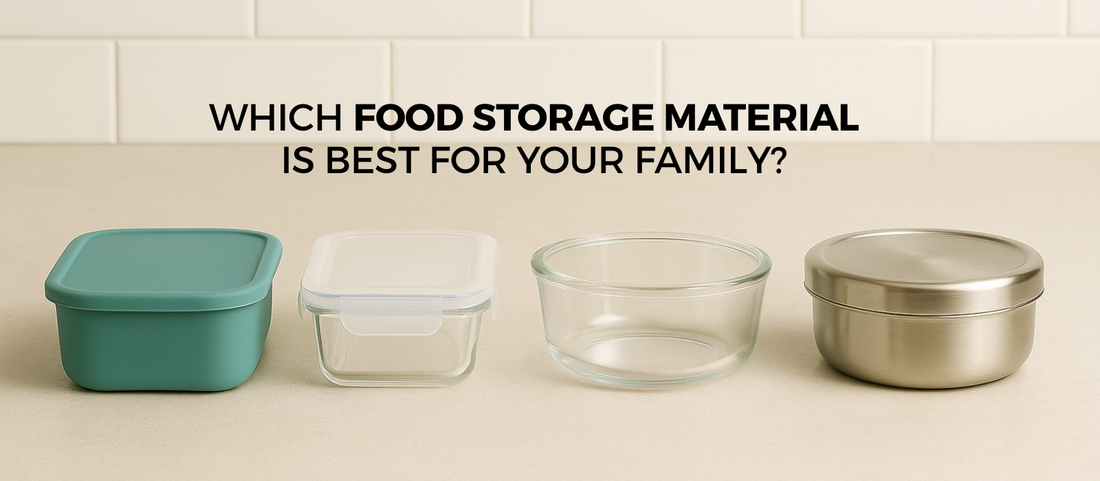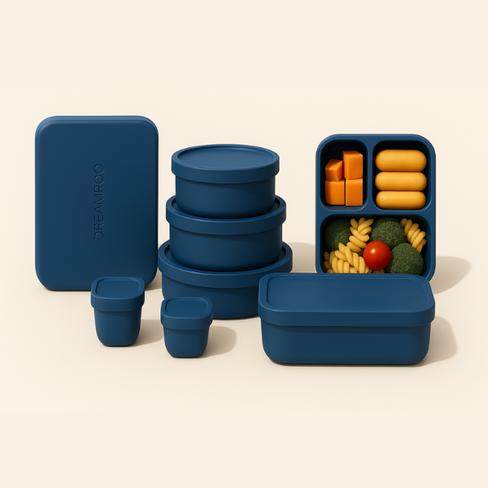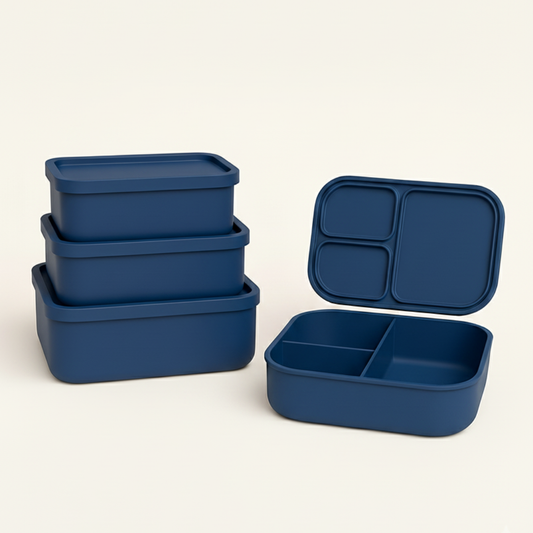
Which Food Storage Material is Best for Your Family?
Smart choices for safer, simpler, everyday storage
When it comes to food storage, choosing the right material matters—especially for families juggling meal prep, leftovers, and snacks on the go. So how do silicone containers stack up against the old standbys like stainless steel, plastic, and glass?
Here’s a clear breakdown to help you choose what’s best for your kitchen and your peace of mind.
🧊 1. Freezer-Friendly Functionality
Silicone: Flexible and cold-resistant down to -40°F, silicone won’t crack or warp when frozen. You can stack, bend, or squeeze Dreamroo containers into tight spaces without worrying about broken lids or brittle corners.
Plastic: Becomes brittle in low temps. Lids often pop off and containers may crack over time.
Glass: Can shatter when frozen or with sudden temperature changes—especially if overfilled.
Stainless Steel: Durable, but not ideal for airtight freezing. Most don’t have leakproof seals.
Winner: Silicone — safe, flexible, and freezer-ready.
🔥 2. Heat & Microwave Safety
Silicone: Heat-safe up to 450°F. You can use it in the microwave, oven, or dishwasher without leaching chemicals or losing shape.
Plastic: Can warp in the microwave and may release harmful toxins like BPA or phthalates.
Glass: Microwave- and oven-safe, but heavy and prone to breaking if handled roughly.
Stainless Steel: Not microwave-safe. Some oven-safe versions exist but are usually bulky and expensive.
Winner: Silicone — safest and most versatile for reheating and cooking.
🧽 3. Ease of Cleaning
Silicone: Naturally non-stick and dishwasher-safe. Food rinses off easily—even sticky sauces or oils.
Plastic: Stains easily, absorbs odors, and can warp in the dishwasher.
Glass: Dishwasher-safe but heavy and often cloudy after frequent washes.
Stainless Steel: Dishwasher-safe, but food can stick and be tough to scrub out.
Winner: Silicone — simple, stain-resistant, and low-maintenance.
🧒 4. Kid & Travel Friendliness
Silicone: Lightweight, soft-edged, and drop-proof. Perfect for little hands or tossing in a diaper bag.
Plastic: Lightweight but can break or crack over time. Not the safest material long-term.
Glass: Heavy and breakable—not ideal around kids or on the go.
Stainless Steel: Durable, but heavy, rigid, and can dent easily.
Winner: Silicone — safe, soft, and ultra-portable.
⚖️ Final Comparison
| Feature | Silicone | Plastic | Glass | Stainless Steel |
|---|---|---|---|---|
| Freezer Safe | ✅ | ⚠️ Can crack | ⚠️ Can shatter | ✅ |
| Microwave Safe | ✅ | ⚠️ Not always | ✅ | ❌ |
| Oven Safe | ✅ | ❌ | ✅ | ⚠️ Limited |
| Dishwasher Safe | ✅ | ⚠️ Warps | ✅ | ✅ |
| Non-Stick Surface | ✅ | ❌ | ❌ | ❌ |
| Lightweight & Durable | ✅ | ✅ | ❌ | ⚠️ Heavy |
| Child-Friendly | ✅ | ⚠️ | ❌ | ⚠️ |
💚 Why Silicone Wins for Real Life
At Dreamroo, we believe your containers should simplify your day, not slow you down. That’s why we use premium food-grade silicone that’s flexible, durable, and safe for every member of the family.
From freezer to microwave to dishwasher, our containers are built to handle it all—without stains, cracks, or stress.






